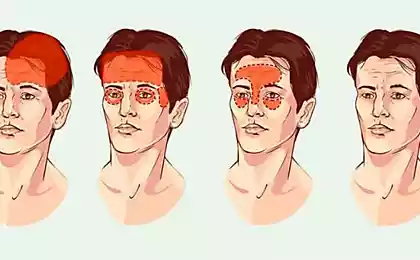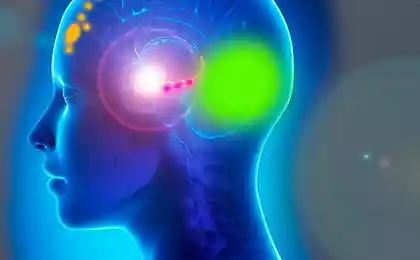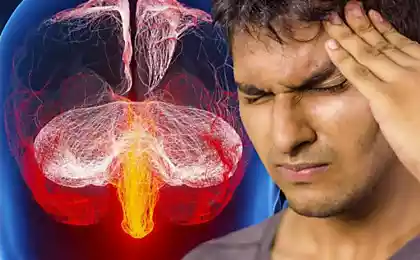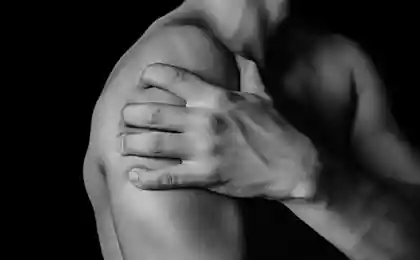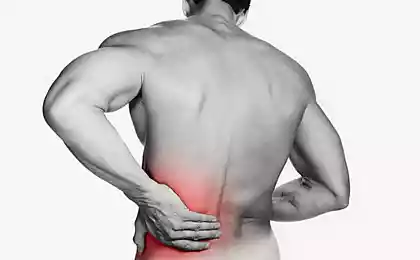165
5 Simple Ways to Trick Your Brain to Avoid Feeling Physical Pain
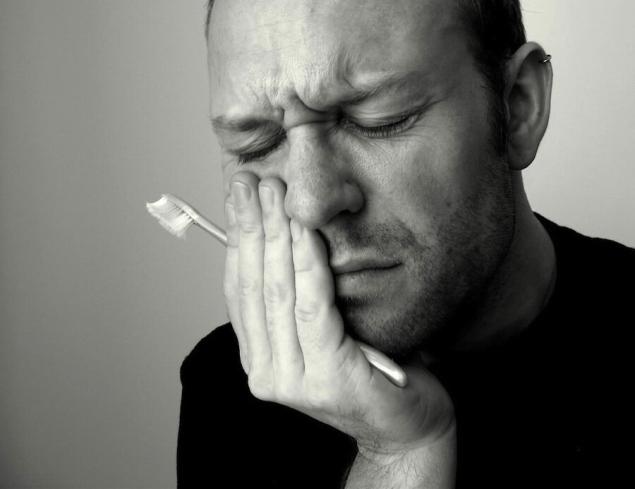
What is the most feared modern man? Financial crisis, war? No, no, no: Twenty-first century children are afraid of pain. And the point is not at all in the mutation of the human body and a sharp decrease in the pain threshold - it is in psychology: we are so used to comfort that the slightest pain makes us run to the pharmacy and drink pills in handfuls. But it turns out there are other ways to get rid of the pain, like outwitting your own brain. Here are five ways to do that.
1. Drink coffee (or other caffeinated drinks)
Every year, in the spring, throwing off winter clothes, we critically look at ourselves in the mirror and reluctantly admit that before the start of the beach season it would be nice to throw a couple of kilograms. A saggy tummy makes us lift cellulite buttocks from the sofa and go to the gym, where we pedal all day, pull dumbbells and die on a treadmill. We feel great until the next morning.
The body is not used to such loads: the muscles aching painfully, the back does not unbend, the hands hang like whips. Do not rush to ask loved ones to shoot you, because all this could be avoided if you “warm up” the body with caffeine in advance.
Scientists conducted an experiment: the first group of participants was given tablets with caffeine, and the dosage of one capsule was equal to about two and a half cups of coffee. The second group received an ostensibly pain-relieving drug, which was actually a placebo. Then the subjects spent the whole day in the gym, actively practicing. As a result, the researchers found that the participants who took caffeine pills felt much better the next day than their counterparts, and were even ready to go back to the gym.
It turns out that advertising does not lie: caffeine-containing energy can really make us extreme, easily overcome any obstacles.
And even if the most physical activity you can afford is moving a computer mouse, there is good news for you, too. In another study, the experimenters asked volunteers to work continuously at a computer for an hour and a half, so that after 90 minutes, the subjects’ neck, shoulders and wrists fell asleep. It is good that before the beginning of the experiment, the “test subjects” were advised to drink coffee. It turned out that those who followed this recommendation experienced much less pain than those who did not. So do not rush to accuse colleagues, constantly snooping for coffee, of parasitism, perhaps they just have something hurting?
2. Look at the part of the body that hurts.
Think back to your last injury – you may have tucked your leg or cut your finger. How did you feel when it happened? Most likely, you were possessed by a quite natural human reaction: "Damn! It hurts so much! I'm going to bleed out and die! But instead of panic, you can turn on logic: carefully examine your injuries and assess how serious they are. You have no idea how it will dampen the pain.
The scientists made the following test: armed with a “magic” mirror and an infrared laser, they “burned” the right hands of the subjects, and they looked in the mirror, but saw in it a reflection of the left, not subjected to laser exposure, hands. In other words, they felt pain, but they saw that their limbs were fine and the pain subsided! A small nuance: you need to look at your injuries, seeing someone else’s “happiness” does not reduce suffering.
Scientists still debate whether visual perception of trauma actually lowers the pain threshold, but in any case, a sound assessment of the situation is better than a tantrum.
3. Laugh.
Imagine waking up in the middle of the night when your bladder woke you up. You jump out of bed, half-closed eyes rush to the toilet... and stumble on the threshold. Pain! It's a terrible pain! What will you do at this moment? Of course, after you remember someone’s mother and send the door in a certain direction, you will cry or go to the toilet. How about a little laugh?
“Laughter is the best medicine,” psychologists say. Of course, laughter is unlikely to help resolve a cancerous tumor or stop bleeding, but a sense of humor definitely helps reduce pain. Laughter helps your brain produce endorphins, happiness hormones that have pain-relieving properties that make you suffer less if you make yourself laugh at a critical moment.
Scientists conducted a series of tests in which they studied the behavior of volunteers at home and in the laboratory: some were asked to watch funny Internet videos, and some were asked to watch boring popular science programs. It turned out that participants who laughed at funny videos were much easier to tolerate pain than those who delved into serious documentary films. In addition, just 15 minutes of laughter is enough to reduce the pain threshold by as much as 10%.
But for laughter to have a healing effect, you must learn to laugh correctly: you need to laugh from the heart, to colic, breathing in the air with your full chest. And pay no attention to oblique glances from the outside - the one who laughs last laughs well laughs.
4. Convince yourself that pain is good.
You can treat neurolinguistic programming differently: someone believes that this is complete nonsense, and someone has experienced the benefit of affirmations. But the fact that the pain of discord is a fact. Aching tooth is an SOS signal that indicates serious dental problems, while the muscles that “suffer” after training are just a sign of atrophy, which is why our brain can perceive pain as a good thing.
To prove this, scientists again began experiments. They recruited two groups of daredevils, put tourniquets on their hands, thereby limiting blood flow, and asked them to endure unpleasant sensations as much as they could. At the same time, the first group was told that the test was dangerous for their limbs, and the second, on the contrary, that it would strengthen the muscles: the longer they last, the more benefits they will receive. In the end, the researchers found that the pain threshold in the latter was much higher than in the former. The experiment was repeated several times, but the results remained the same: the “bullyed” participants wriggled in pain after a few minutes, and the subjects from the second group steadfastly endured it, believing that they would eventually get biceps, like Schwarzenegger’s.
So a little lie to save yourself was very helpful. So the next time you hit a finger instead of a nail, think not about the pain, but about the invaluable experience you are gaining.
5. Look at something terrible.
Imagine yourself in a dentist’s chair: trembling with fear, you look at the “torture” tools, the drill, the sound of which makes you cover with cold sticky sweat. To get a little distracted, you look aside and see on the wall paintings with beautiful landscapes or posters with cute cats. The doctor took care of you, decorating the office with soothing pictures, but unfortunately he didn't know that in this case, much more effective than horror photography.
The restless scientists conducted the following experiment: they showed the subjects slides depicting people in various life situations – from neutral to catastrophic. And before that, they were asked to put their hand in a tank of ice water and hold it there until they had enough patience. The paradox is that volunteers who saw unpleasant pictures were better able to tolerate pain than those who admired flowers.
Remember, if you want to distract someone from the pain, do not turn on “Luntika”, it is better to show the bloodiest scene from “Saw”. And don’t run away from the dentist’s office, decorated with zombie portraits: most likely, this is a very good specialist who understands not only dentistry, but also psychology.
Source:publy.ru
Source: /users/1077
